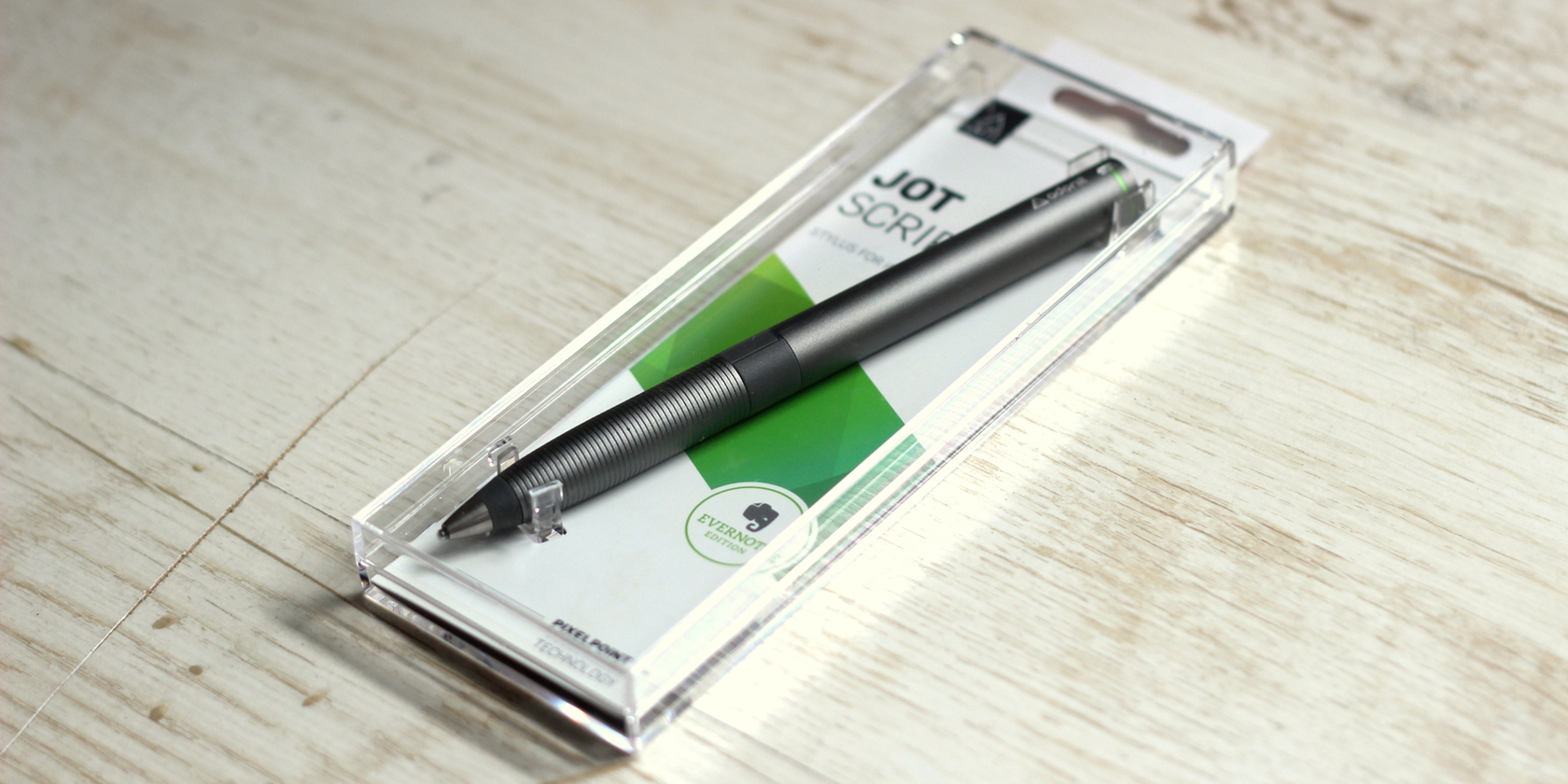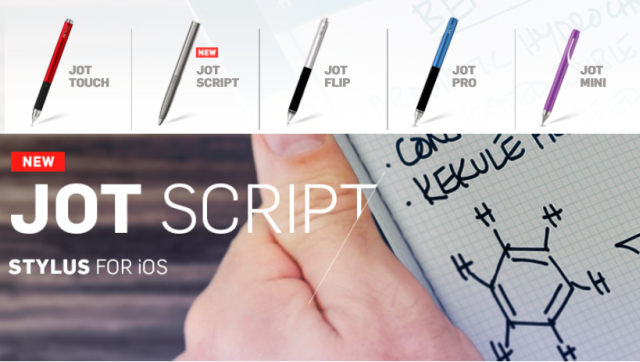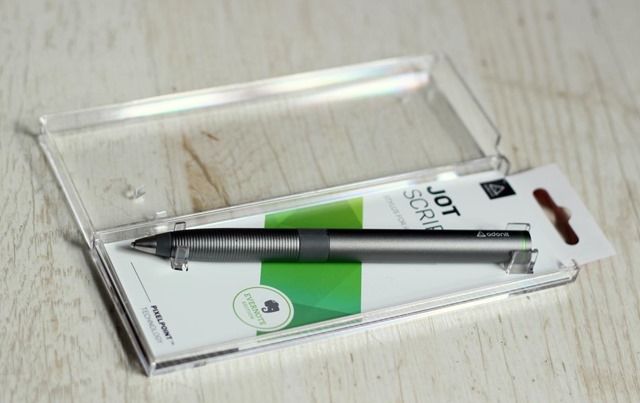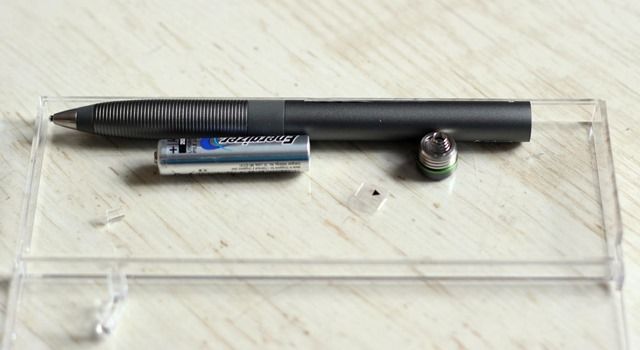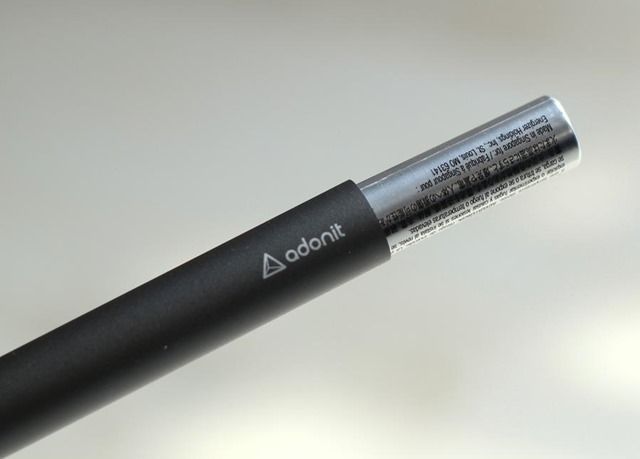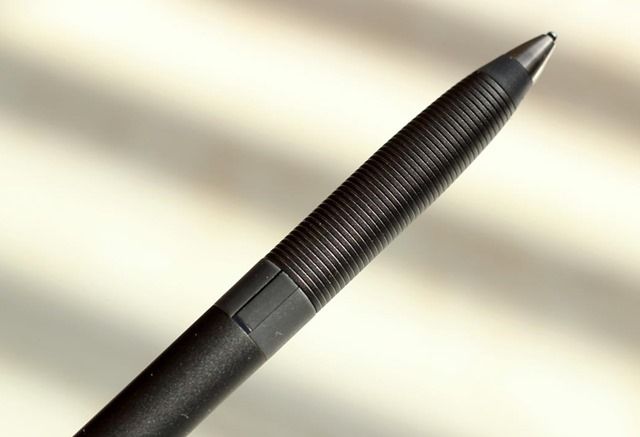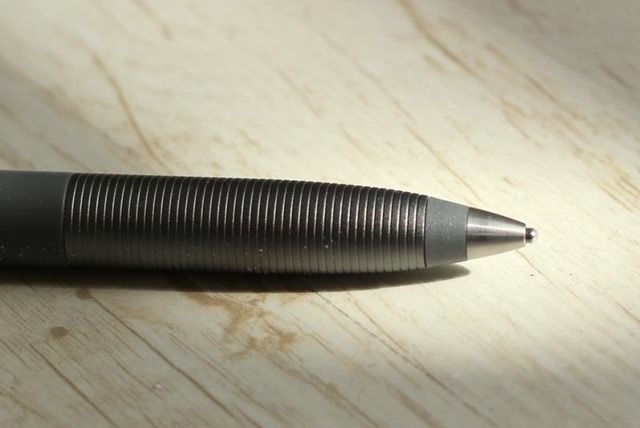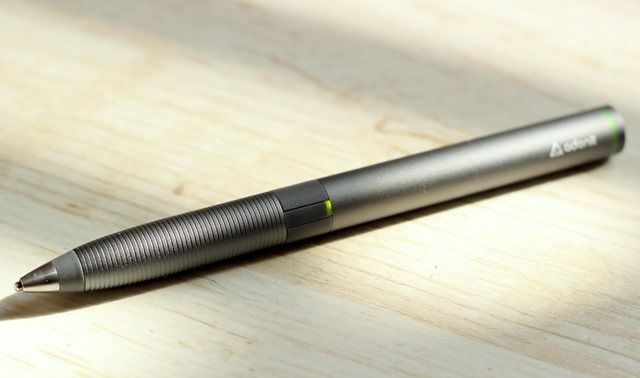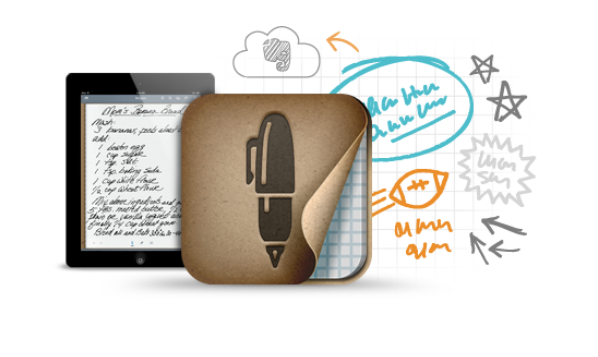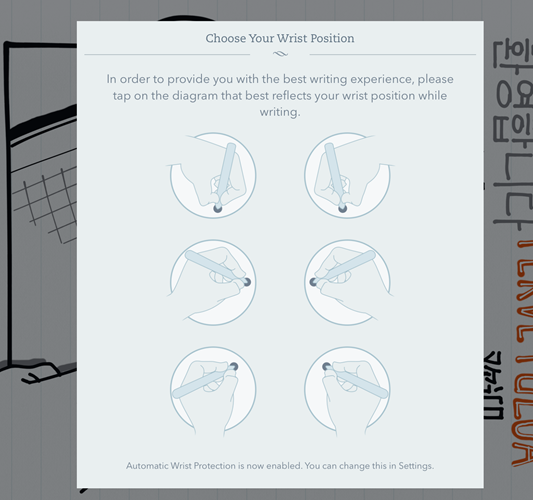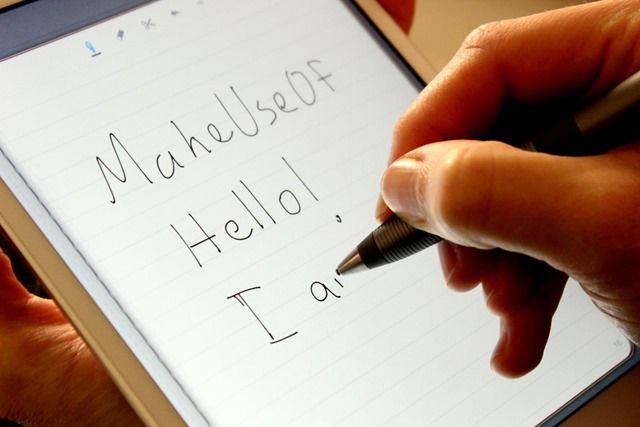Adonit Jot Script
Tablets and smartphones are a widespread norm, but what about styluses? When looking around you in a classroom or a meeting, you still don't see people fervently writing away on their tablets using a stylus. They're either typing, or using a plain old pen or good old paper.
After comparing a good set of styluses, and another set of more affordable ones, I can tell you why that is. Writing with a stylus is just not that comfortable. The thick rubber tips are nothing like a pen, and many apps get completely confused when you rest your palm on the tablet's screen. And, really, who can write anything with their palm in the air?
To solve these problems, some newer apps offer palm rejection technology, and some styluses are doing their darnedest to become more like regular pens. Equipped with a very fine tip and Bluetooth technology, the $75 Adonit Jot Script tries to solve all these problems in one go. Can it deliver on its promise? Can Adonit make a stylus that's actually worth paying $75 for? To find out, we bought one. And as usual, one of you will also win this premium stylus for free!
Introduction
Adonit is a well-known stylus maker, and the Jot Script is their newest addition to the line. Unlike most stylus makers, most of Adonit's styluses have unique tips which you won't find on other styluses. We loved the Adonit Jot Pro — a more affordable solution at $29.99 — for its unique plastic tip made for sketching, drawing and writing, but no matter how good it was, it didn't really feel like a real pen.
With the Jot Script, Adonit did several things differently. To start, we have the fine, 1.9 mm tip, which, at least according to Adonit, is the thinnest on the market. With a tip like that, it feels much more like a pen than a stylus. The tip is not made of rubber like most stylus tips, which means it acts more like a pen when pushed against an iPad's screen.
http://www.youtube.com/watch?v=VXIkj-E76Eo
The Jot Script is battery powered (one AAA battery), and is equipped with Bluetooth technology for pairing with certain apps. According to Adonit, this not only allows for palm rejection, but for greater precision and accuracy when used with those apps.
While the Jot Script should work with any capacitive screen, it's really made for iOS devices, and Adonit promises nothing when it comes to any other device.
Is the Jot Script really the only fine-point stylus on the market? It sort of is, at the moment, but it definitely won't be for long. JustMobile, makers of our past stylus showdown winner, the AluPen, have just announced the AluPen Digital this past CES. The AluPen digital should be available in Q1 of 2014, and is expected to cost only $50.
The recently funded TruGlide Apex features a 2.4 mm tip and uses active circuitry to offer better precision when writing on a tablet. The Hex3 Nota is another successful attempt at a fine-point stylus, but with its 3.7 mm tip, it's not as fine as the Jot Script. It's available for pre-order for $50, and comes with an extra tip.
Getting To Know The Jot Script
Similar to previous Adonit styluses, the pen-like feeling of the Jot Script starts with the packaging. Rather than going for something trendy and unique, Adonit opts for an old-fashioned plastic box which greatly resembles a premium pen packaging.
The Jot Script comes equipped with one AAA battery, which already resides inside the pen when you open it. In order to prevent the battery from draining, Adonit has included a small plastic tab inside the stylus, which you need to remove before you can turn the stylus on. This is done by unscrewing the end of the stylus.
Adonit has done everything to make the Jot Script look and feel like a regular pen. Looking at the Jot Script with its very fine tip, you can almost think it's actually a regular pen. Why almost? The Jot Script is a bit too thick and a bit too heavy to feel like a regular pen. After all, what regular pen hides a AAA battery inside? While it does weigh only 15 grams (0.5 oz) without the battery, it goes up to 29 grams (1 oz) with the battery inside.
Aside from that, holding the Jot Pro feels like holding a regular pen. The striated top part makes sure the stylus doesn't slip in your hand, and the power button is so inconspicuous, I managed to miss it completely at first. Good thing the Jot Script comes with a basic manual.
The true highlight of the Jot Script is its super-fine tip. Indeed, this too looks almost like a regular ball-point pen. The tip feels like it's made of some kind of metal, and if it weren't for the heavy weight and power button, I'd almost expect it to sprout ink.
As mentioned above, the Jot Script is made for iOS devices, and although it may have "limited functionality" on other touchscreen devices, don't hold your breath. Its more advanced features, such as palm rejection and extra precision, require Bluetooth 4.0, and will only work on iPad 3 and newer, iPhone 4s and newer, and both iPad Minis.
Using The Jot Script
Looks are fine and dandy, but at the end of the day, it's not looks that really matter. The Jot Script looks like a regular pen, but what does it feel like to use? To find out, I first put it to the test as a regular stylus, using it for mundane things such as browsing and typing.
The first thing you need to know about the Jot Script is that it doesn't work at all when turned off. This is true for any kind of action you want to perform with it, from scrolling to tapping. Unlike regular rubber-tip styluses which mimic a regular finger on a capacitive screen, the Jot Script's tip needs power in order to have an effect. To turn the stylus on, give the power button a long press and wait for the green light to appear.
Once powered on, the Jot Script is an average stylus for most jobs. It's easy enough to use for most everyday functions, but it didn't always catch every tap, requiring me to repeat it two or three times before it was recognized. It works well with drawing and sketching apps such as SketchBook Express, and, while it's not exactly made for drawing, the fine tip feels really good for a non-artist like me.
But the Jot Script is made especially for handwriting. So I decided to try the Jot Script with the app it was truly made for: Evernote Penultimate.
The Jot Script is not called "Evernote Edition" for nothing. The stylus was developed in partnership with Evernote, and no matter where you look — be it on Adonit's website, Evernote's website or the Jot Script's booklet — everything points at Penultimate as the app for this stylus.
Penultimate is a free handwriting app for iPad that syncs with Evernote, and is made for all sorts of note-taking and sketching. You can use the Jot Script with Penultimate as is, but in order to make the best of it, you need to pair the two.
http://www.youtube.com/watch?v=VQmU9-VlL1s
You can now use the Jot Script to write in Penultimate, without worrying about palm rejection. You can even choose the palm position that most accurately fits that one you actually use, whether left or right-handed.
But does it truly feel like writing with pen on paper? Unfortunately, not so much.
On the positive side, the Jot Script usually keeps up with normal-speed handwriting, and unlike other styluses, it doesn't often miss strokes when you're going too fast (this does happen from time to time, though). It does, however, lag quite significantly behind your actual pace. As you go along writing, the letters themselves start to appear with a greater and greater latency, until there's a noticeable lag between your strokes and the actual letters appearing.
From time to time, the app seems to lose the Jot Script entirely, at which point, it just stops responding. Instead, you'll find that your palm is the one that is suddenly registering — not very good for a stylus boasting such advanced features.
While the experience is not perfect at first, it definitely improves as you get used to both stylus and app. As you go along using them, you'll learn the right amount of pressure you should use with the stylus (it doesn't need much), and you'll discover whether you're more comfortable writing in zoom-in or zoom-out mode.
If you're not planning to do a huge amount of writing, and want to use the Jot Script and Penultimate for light note-taking, along with some easy sketches, the experience is excellent all around. The Jot Script truly does feel like a regular pen on the iPad's screen, and it's very responsive for small sketches and some short hand-written notes.
It's worth noting that the Jot Script's hard tip does make quite a bit of noise when used on an iPad screen. This is not silent writing like pen on paper or rubber tip on screen — there are some pretty noticeable taps. Hopefully, these won't bother those sitting next to you in class or in a meeting.
The Jot Script acts differently with each app you try it with. For example, I tried it with INKredible, a new note-taking app that had palm rejection built into its interface. Palm rejection worked flawlessly with this one (without even pairing the two! INKredible doesn't support Adonit's SDK), but the stylus required a lot more pressure than with Penultimate. SketchBook Express, on the other hand, did not require this extra pressure, but doesn't offer palm rejection.
Supported Apps
While Penultimate is the app the Jot Script was made for, it's not the only app to support it. There are three other apps that can currently pair with the Jot Script, and surprisingly, some of them offer even more advanced features than Penultimate. At least on paper.
The compatible apps are Noteshelf, ZoomNotes and Goodnotes — all paid apps that have limited free versions. On paper, Noteshelf and ZoomNotes also support button shortcuts with the Jot Script, but I couldn't get them to work on the first, or even find how to enable them on the second. On Noteshelf, although it does mention and recognize the Jot Script, the shortcut settings are all for the Jot Touch, which is a different stylus. This could be a matter of updating the app to support the newer stylus better.
The Jot Script does pair with all three of these apps, and works well with them. I was especially impressed with Noteshelf, which made handwriting with the Jot Script even easier than Penultimate.
Should You Buy The Jot Script?
The Jot Script is an impressive stylus, and and enjoyable one to use. However, it still doesn't provide that flawless stylus experience we're all waiting for. No matter how rare, the glitches that do exist prevent it from feeling like a regular pen, unless you're used to using faulty pens that keep running out of ink.
If you often use your iPad in class, meetings, or anywhere else where you need to take short notes, you'll probably enjoy the Jot Script. But don't expect it to truly replace pen and paper, as neither stylus nor apps are quite ready for this.
Bluetooth enabled fine-point tip styluses are pretty new, and they're bound to get better with time. Instead of shelling out $75 now, it's probably smarter to wait for the technology to improve some more before investing that much in a stylus.
If you're an early adopter, or if taking short notes and some sketches on your iPad easily could really improve your productivity, there's no reason to avoid the Jot Script. It's a good stylus with a good user experience. It's just not for the masses, yet.
[recommend]Unless you're an early adopter, it's probably better to wait some more.[/recommend]
The Winner
Congratulations, Kendall Brice! You would have received an email from jackson@makeuseof.com. Please respond before February 21 to claim your prize. Enquires beyond this date will not be entertained.
Send your products to be reviewed. Contact Jackson Chung for further details.

